The Tour du Mont Blanc ranks as one of—if not the—best long-distance treks in Europe. Revel in unobstructed views of the European Alps as you circumnavigate the Mont Blanc Massif, traversing three countries en route: France, Italy, Switzerland. It takes most trekkers between eight to eleven days to complete the trek. On top of that, expect an average of 9.3mi of hiking a day, five to seven hours of walking, and around 3281ft elevation gain. It may sound exhausting, but the hanging glaciers, soaring peaks, and colourful meadows create the ultimate distraction!
Want to know more information? Read on to find out all you need to know about the complete Tour du Mont Blanc Trek!
The Basics of the Tour du Mont Blanc
Accommodations
Tour du Mont Blanc accommodation options are a common theme among TMB hikers. Firstly, you’ll find a wide variety of places to sleep. So, if you want to hike without hurting your wallet too much, you can camp, or you can opt to stay in the many refugios or hotels. A refugio, refuge, or mountain hut is a mountain hostel with relatively basic interiors but typically fantastic food! Note that some have private rooms, but many just offer shared dormitory-style accommodation.
Along with the variety of accommodation options, there are also many ways to arrange the tour. Many opt to do the planning themselves—booking their own hotels and carrying all their clothes with them—but it’s also nice to have a little help.
In peak season (July and August), it may be better to have someone arrange the accommodation bookings for you and the luggage transfers. However, making reservations is not without challenges as it commits you to a route and doesn’t account for health issues or delays, such as muscle strains or blisters.
Outside of peak season, we typically make reservations day-to-day. This allows us to listen to our bodies and plan each day based on our feelings. We cover which refuges/refugios to consider, camping options, and discuss private rooms in our article that details accommodations along the Tour du Mont Blanc.

Cost
Ah yes, the big ole’ question: how much does the Tour du Mont Blanc cost? We could spit out a number, but the calculation takes a little more thought. First, you’ll have to consider your hiking style—are you more rustic and prefer camping? Would you rather alternate between hotels and refuges? Or stay in refuges and refugios (Italian version) whenever possible? Or kick back and relax in a private room as much as you can? Will you travel alone? Take public transportation throughout? So many things to consider! Here’s a quick snapshot:
Let’s say you’re setting off from Les Houches in a counterclockwise direction, staying ten nights, might consider transportation due to weather or tiredness and plan to stay in refuges as much as possible while enjoying the half-board option offered at most. How much will your trip cost? It could cost around 800 euros, give or take a couple of hundred euros, this includes breakfast, snack, and drink considerations. Our article on how much the Tour du Mont Blanc costs offers a more precise picture of the price you may have to pay.
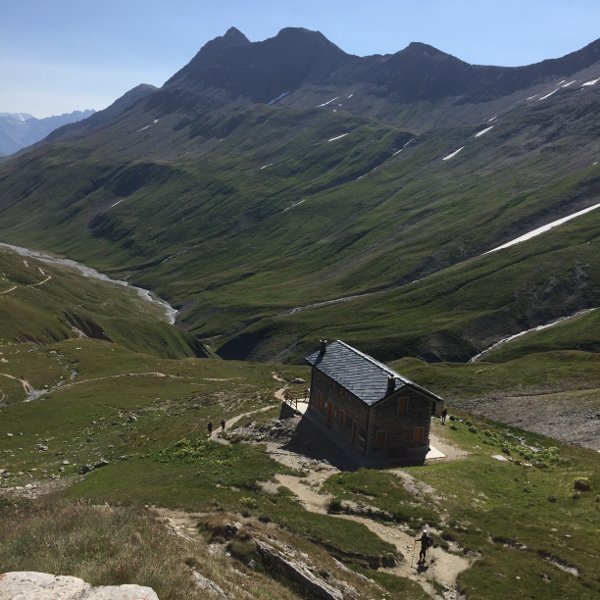
Distance
The Tour du Mont Blanc spans 105.6mi, granting plenty of time to bask in the wild, undulating scenery stamped by the intoxicating Mont Blanc Massif. Most trekkers complete this incredible outdoor adventure in 8 to 11 days, but transportation assistance can shorten your time. Taking alternate routes along the trail may also manipulate how long you spend trekking. Those hoping to camp the whole time will have to take alternate routes to meet their tenting goals. Discover more info via our article on how long it takes to hike the Tour du Mont Blanc.
Food
Something else TMBers are quick to mention is the food along the Tour du Mont Blanc. Stop at one of the mountain huts along the way for an espresso and a croissant!
It may be beneficial to carry around snacks or energy bars for lunch, and you can always check in with a mountain hut to see if they’re offering lunch. Some huts may even provide a packed lunch to overnight guests before they set off for the day.
It is hard to overstate how wonderful it is to be sitting outside on a sunny summer day with a cold beer, a freshly baked margarita pizza and staggering views of sheer cliffs and pointed peaks. It is one of the real treats of the trek.
As we mentioned, mountain huts offer the option of half-board or full-board. If you opt for the latter, all three meals will be provided in many cases. And one of the biggest culinary benefits of walking through three different countries is that your meals will each reflect the unique cultural and regional gastronomy. We always love staying at the high Italian refugios and getting good red wine and hearty, delicious pasta. After this, we come down to Switzerland and a steaming pot of delicious fondue.
While most serve excellent food, some mountain huts don’t have the most outstanding cuisine reputation, so try not to go in with high expectations every day.

Transportation
Find transportation assistance all over TMB, from gondolas to shuttles to buses; there’s almost always a way to get you from A to B if you’re not in the mood to hike or want to avoid the rain, etc. Most buses and shuttles run every 30 minutes to an hour during peak season, with cable cars going around 20-30 minutes. Expect to pay more for cable cars and chairlifts, around 10 EUR to 25 EUR, whereas buses often go for under 10 EUR. You’ll find some form of transportation in each stage as you trek!
How to prepare for the Tour du Mont Blanc
Preparing for a trip can be stressful, especially a hiking adventure such as the Tour du Mont Blanc. First things first: you’re in the backcountry, you’re on your feet all day, you’re moving. This means one thing—fitness is key! What else can you do? It’s helpful to do whatever you can do to prepare for the Tour du Mont Blanc to ensure ultimate enjoyment and little stress. Take a look at some tips below:
- Start training!
- Book your accommodations super far ahead of time
- Secure travel insurance
- Find out the documentation you might need
We could go on and on, but thankfully, we don’t have to since we’ve already discussed how to prepare for the Tour du Mont Blanc in detail here!
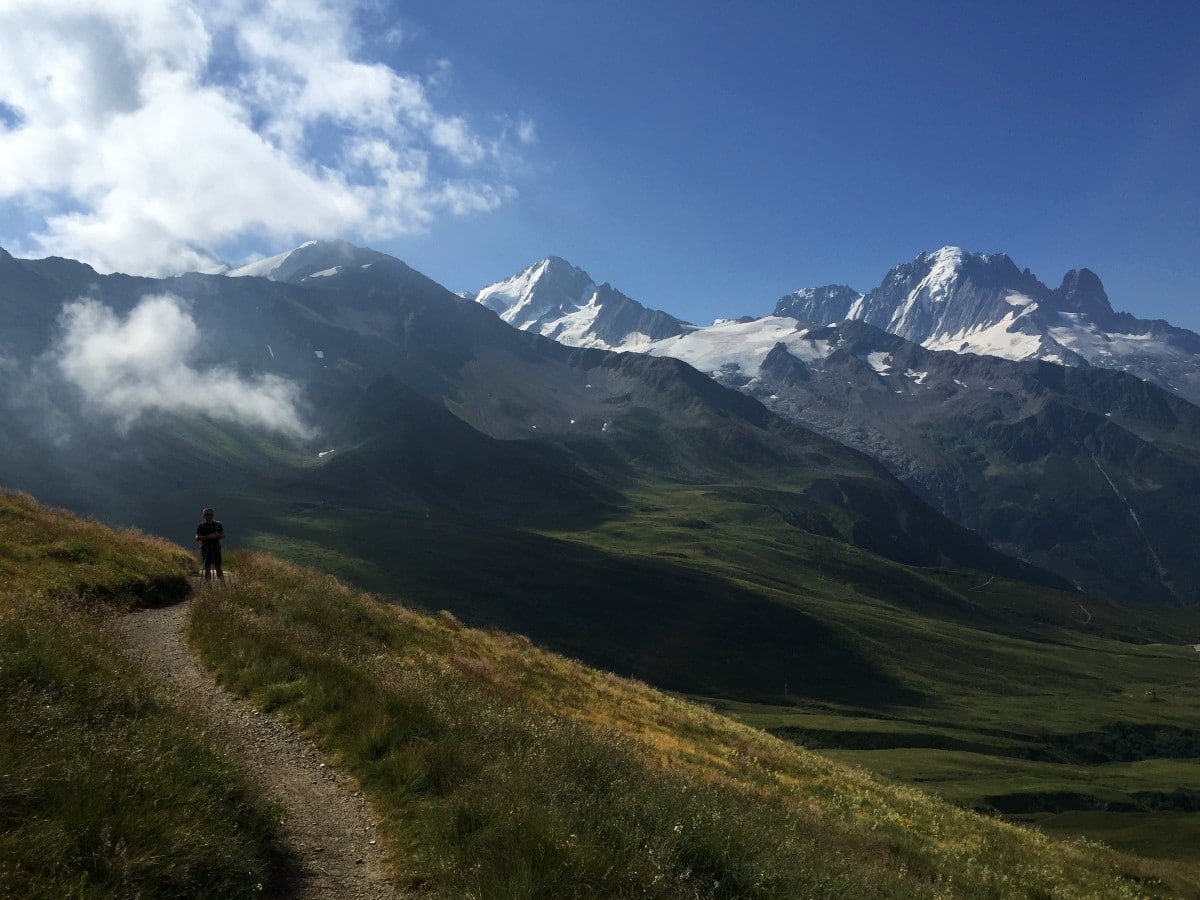
What to pack
Put your hand up if you despise packing. Most of us can relate! Packing can be a punishing task. Should I bring ten pairs of pants? What if one gets ripped? I have an accident in another? The other gets soaked? And cue the endless “what ifs.” We’ve compiled a list of items to consider taking with you, with some of the essentials being:
- Your passport (international travellers) or ID (those from the European Union)—make sure it’s updated and not about to expire
- High-quality backpack—consider ventilation, weight, a padded hip strap, and a rain cover (to name a few things) when shopping for the best hiking backpack
- Clothing—fleece or wool fabric for warmer clothes, raincoat, quick-dry/lightweight material for everyday clothes, merino wool for socks, change of clean clothes for the evenings, flip-flops or comfortable shoes for the evenings (these are just some items to consider)
- Hiking boots
- Cash as most refuges don’t take credit cards, but take note of the ATMS in Chamonix, Les Contamines, Les Houches, Argentière, La Fouly, Courmayeur, Champex-Lac
- Power adapter
- First-aid kit
- 2L water bottle
- Headlamp
- Consider a solar-powered battery pack
- Earplugs for the noisy refuges
- Refuges also require you to bring a sleeping bag liner
- Sunscreen
- Microfibre towel
- Hiking poles
Our article on what to pack for the Tour du Mont Blanc provides a bigger, more detailed list on all the essentials!
Best time to hike the Tour du Mont Blanc
Mont Blanc’s landscape morphs from a wildflower wonder and explosion of colours to a misty white blanket of snow, making it a marvel to visit year-round.
What’s it like to hike in the summer?
Embarking on the Tour du Mont Blanc in July and August heightens your chances of booking a refuge since they are open, hitching a ride via public transport. Still, the trail is busier, and the weather is slightly rainy in the afternoon. If you want to hike in June, expect lingering snow in areas and lower trail congestion!
What’s it like to hike in the winter?
Most people choose to hike in July and August, but the brave ones can take off beneath the snow-swept skies. However, even experienced hikers (or skiers) should consider booking a guide in winter. The conditions can be treacherous! Plus, it’s more difficult to find an open mountain hut during the winter or running transportation.
What’s it like to hike in spring?
Spring may be the time for flowers to blossom, but melting snow brings an increased risk of avalanches on the mountains. Therefore, we advise you to avoid trekking around Mont Blanc in March and April! May can bring warmer temperatures, but the trails can be slimy and not super enjoyable.
What’s it like to hike in autumn?
One of the best times to complete the Tour du Mont Blanc? September! Most mountain huts remain open until partway through the month, and trail congestion evaporates. The weather can be moody, though! October and November come with chillier temperatures sweeping the region, requiring extra gear and heavier bags. Unfortunately, mountain huts are closed, and the sunlight dips behind the mountains faster, limiting daylight during autumn.
Want to know more? Discover a month-by-month breakdown of the weather, conditions, and more in our article on the best time to trek the Tour du Mont Blanc.
Tour du Mont Blanc Elevation
The Tour du Mont Blanc elevation ranges between 3281ft and 28684ft, which is high enough to provide a good challenge and some amazing scenery, but not high enough that most people have to worry about acclimatization or altitude sickness. The Col des Fours in France and the Fenêtre d’Arpette in Switzerland are the official highest points on the trail. Total elevation gain: 2313ft.

Tour du Mont Blanc Map
The typical TMB starts in Chamonix and works counterclockwise. So, instead of starting in Chamonix, you’ll take a bus to Les Houches to begin and end the trek here, as it’s a gentler ascent. This also saves the views across the valley of the Aiguille Verte and Mont Black for the finale of the hike. And it avoids the knee crunching descent down the Les Houches, which has stopped many hikers on Day 1 with blisters and knee pain.
The majority of trekkers prefer to combine refugios and hotels, although, as we mentioned above, camping helps elevate the rustic wonder of this trip and grants a more flexible option. Setting out from Les Houches to Les Contamines for the night, then onto Refuge Les Mottet, stopping at Refuge de Bonhomme for lunch. Then proceed to Refugio Elisabetta – a wonderful stop for the night, even if it’s a short day. Usually, we make sure to pick up some cake at Rifugio Elisabetta en route to Courmayeur for a rest day. We recommend spending an entire day in Courmayeur, roughly halfway through the trek, as it gives you time to do laundry, relax, and soak in some Italian culture (and maybe a relaxing bath!). Also, did we mention eat?!
Continue over a few more passes to Refuge Walter-Bonatti, then head into Switzerland to La Fouly. Be warned: prices in Switzerland are incredibly expensive! Nights in Switzerland will be spent in Champex and Trient, so prepare to have your wallet emptied. Don’t worry–you’ll reap the natural rewards upon entering France over the famous Col De Balme by a fantastic refugio with delicious snacks and coffee. Some people finish the trek down at Argentière. For us, though, one of the highlights is getting up high above Chamonix and looking back at the Mont Blanc Massif and then finishing back in Les Houches.
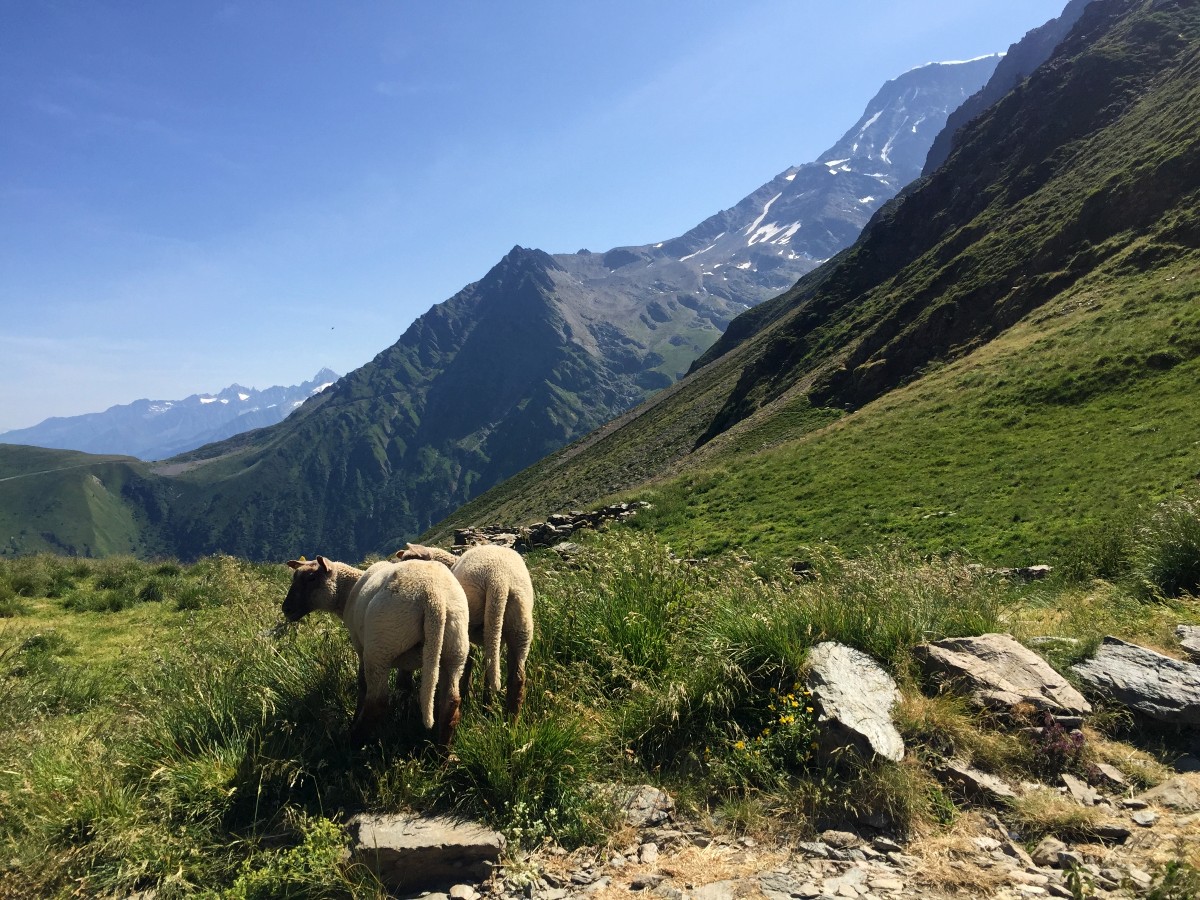
Tour du Mont Blanc Tours
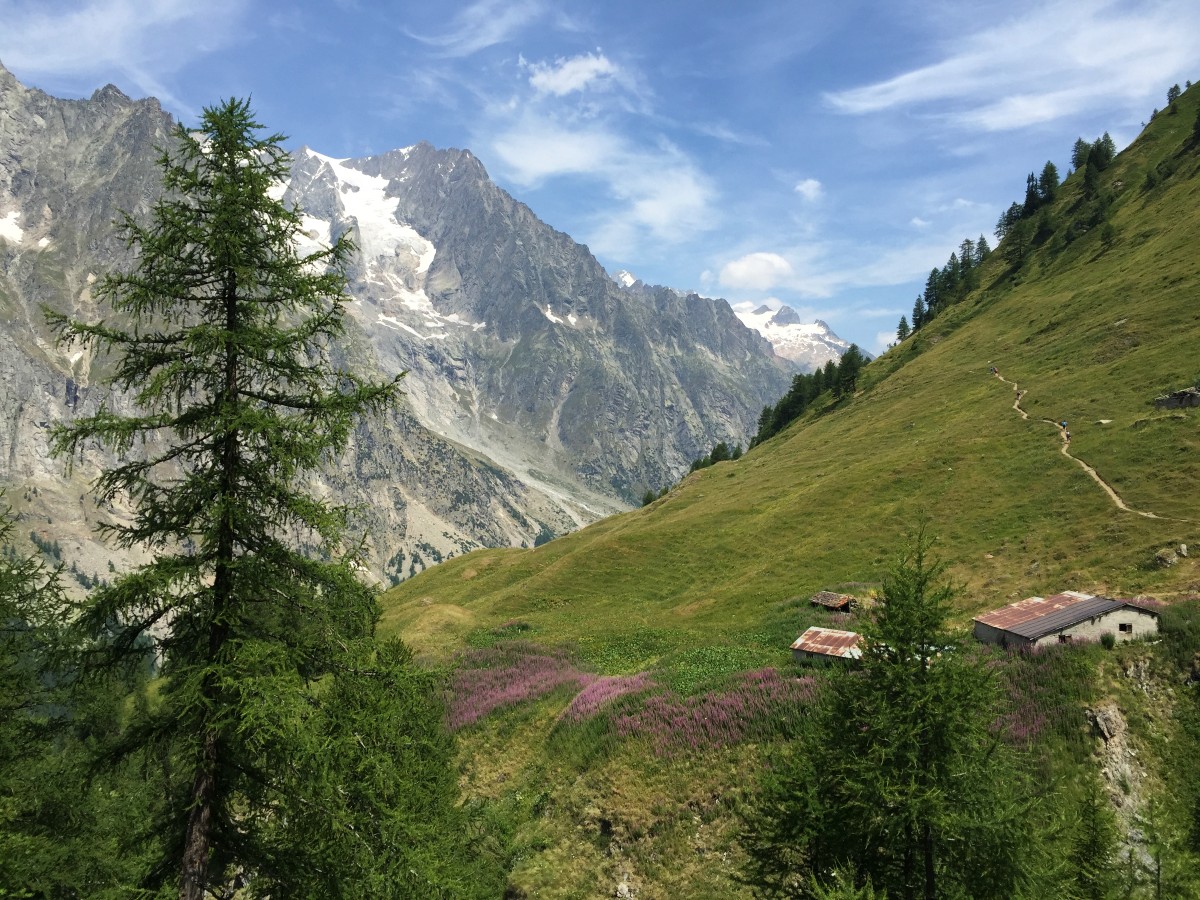
The Tour du Mont Blanc is one of the best trekking experiences in the world. The incredible scenery and rich cultural experiences you’ll have in the Alps guarantee that your TMB trek is one that you won’t soon forget! Before you go, amp up your excitement by checking out some interesting facts about Mont Blanc. It never hurts to impress your trekking mates with some fun tidbits!
Have more questions? Find answers to frequently asked questions about the Tour du Mont Blanc here.
-
Tour du Mont Blanc Articles
Check out our series of articles planning an incredible Tour du Mont Blanc!
- Complete Guide to the Tour du Mont Blanc
- How long does it take to hike the Tour du Mont Blanc?
- How to Prepare for the Tour du Mont Blanc
- Packing List for the Tour du Mont Blanc
- Where to Stay on the Tour du Mont Blanc
- When to hike the TMB?
- Frequently Asked Questions about the Tour du Mont Blanc
- 10 Interesting Facts about the TMB

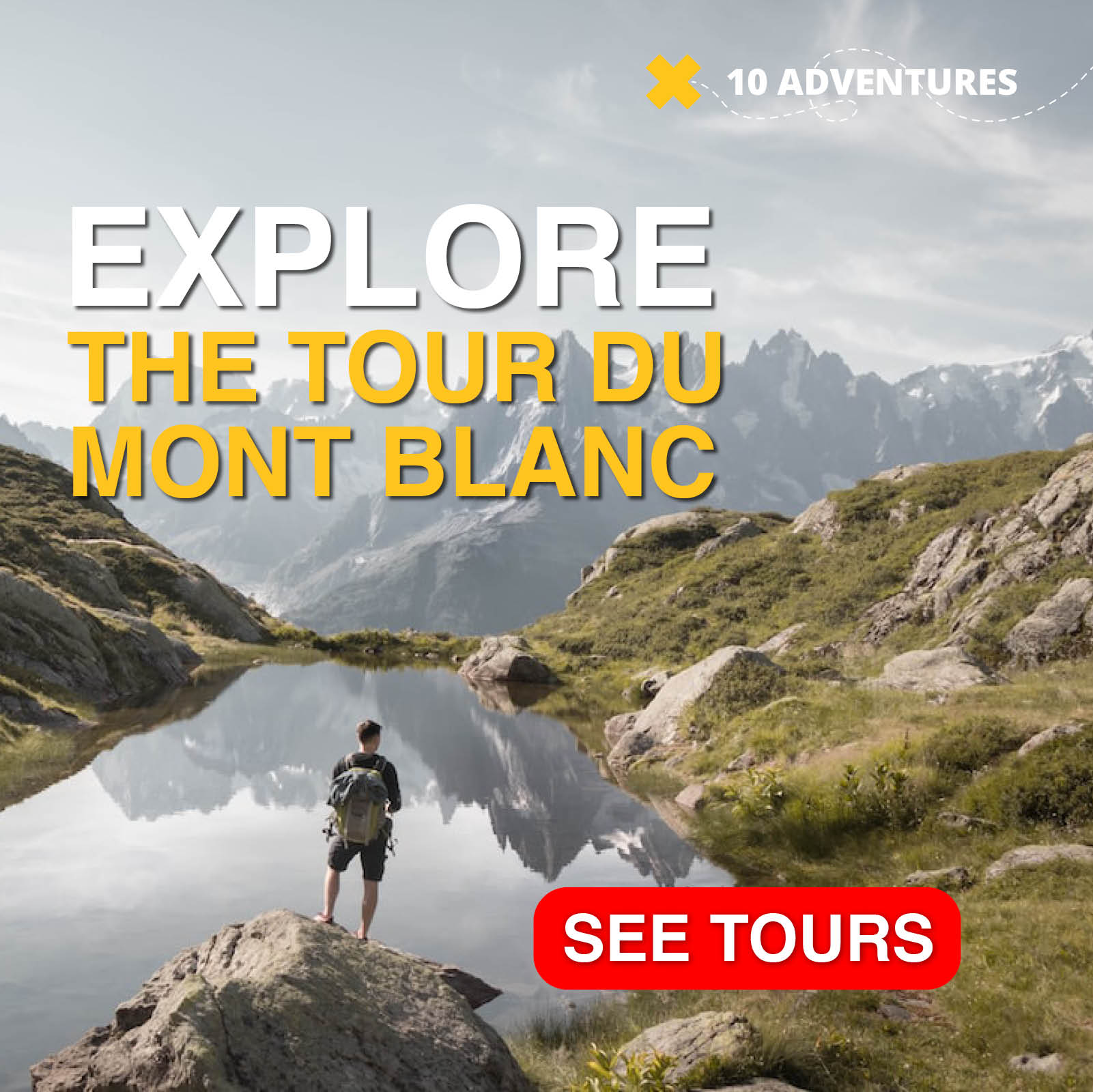



Comments
Jacinthe Bennett8 years ago
4 of us girls are going late September and am wondering how hard it is, and what to base it on. Any idea of a good exercise plan to help out!! Tks. Can do a 5 kms in 33 mins.but not sure how much that helps. Tks. Jacinthe
Reply